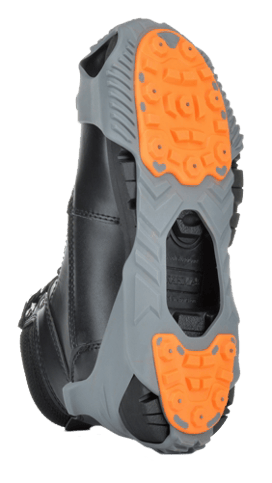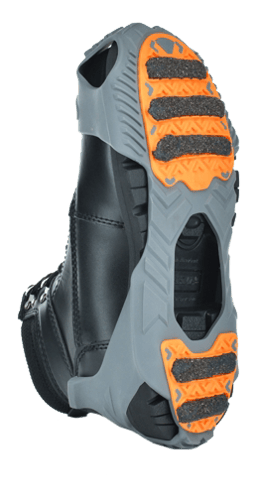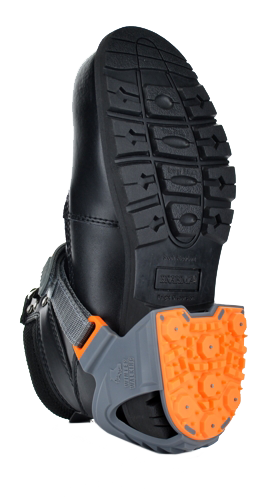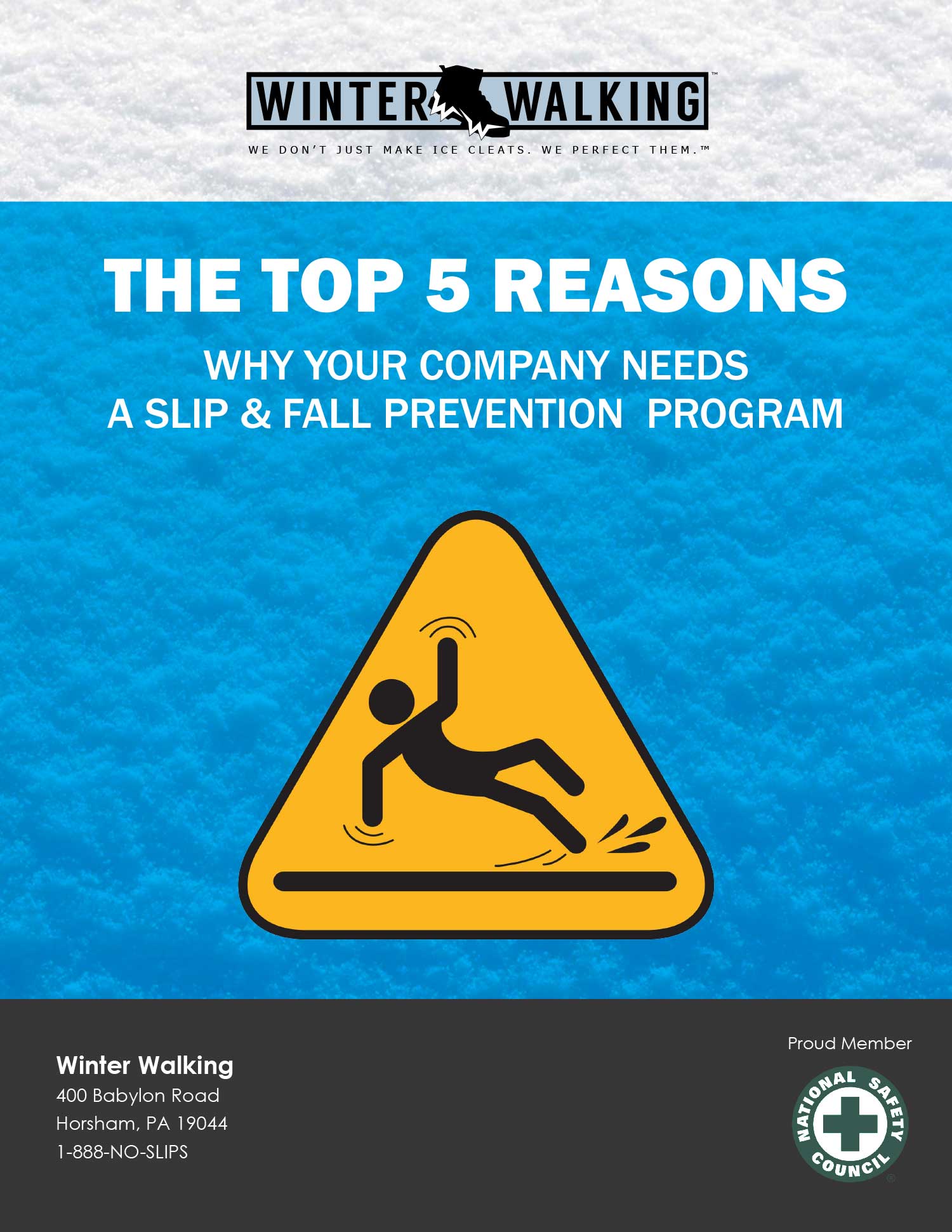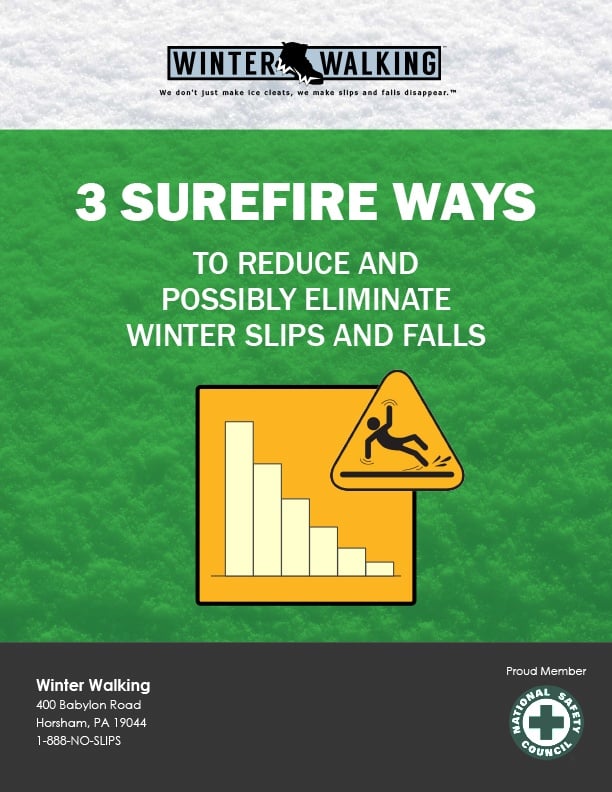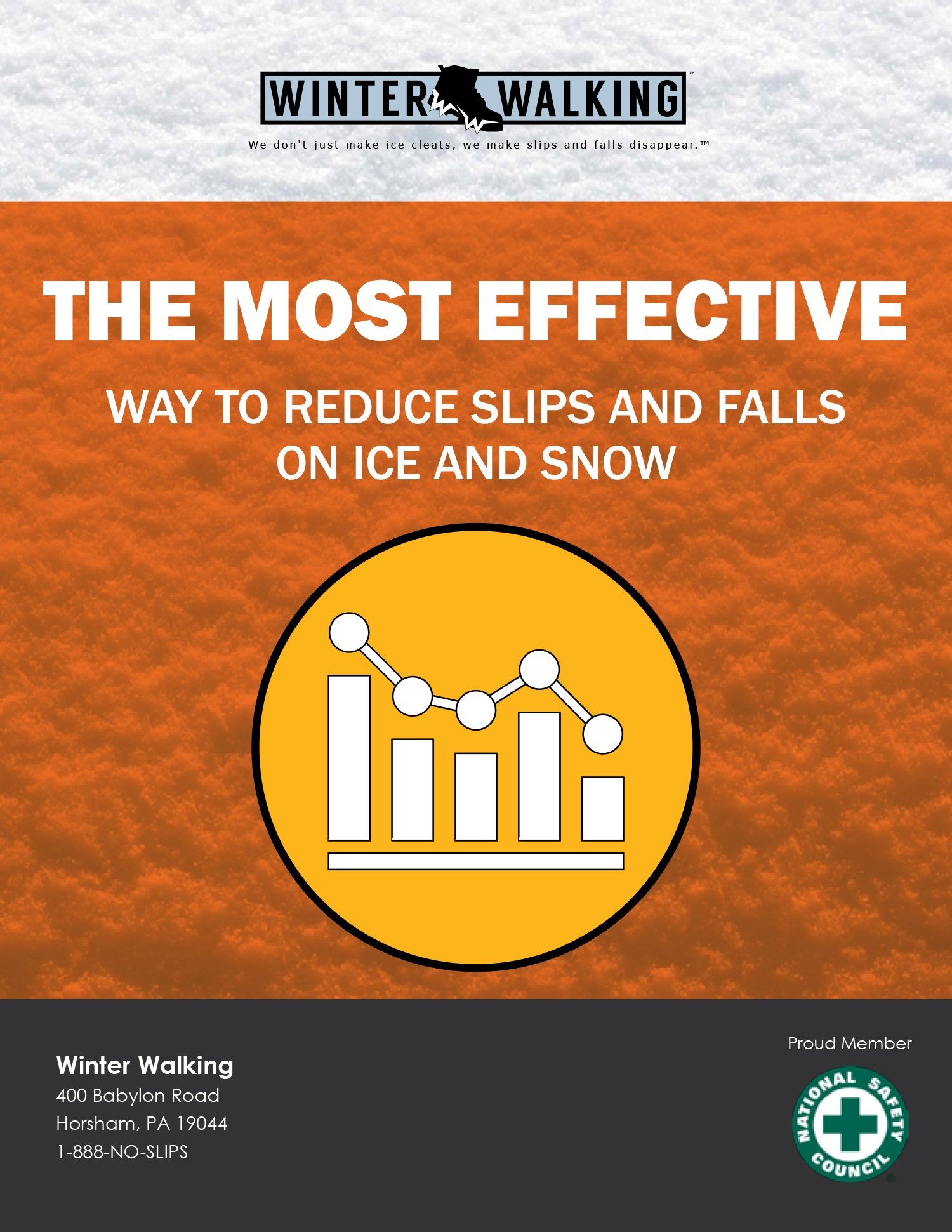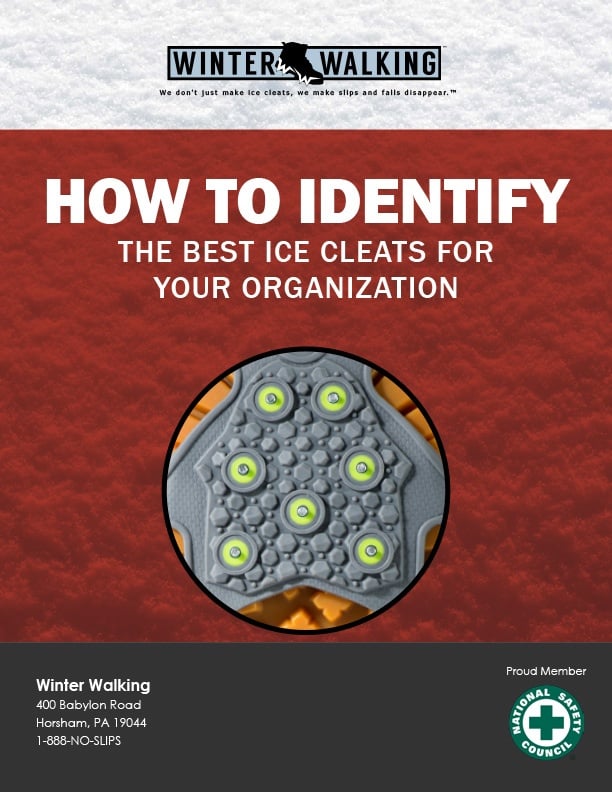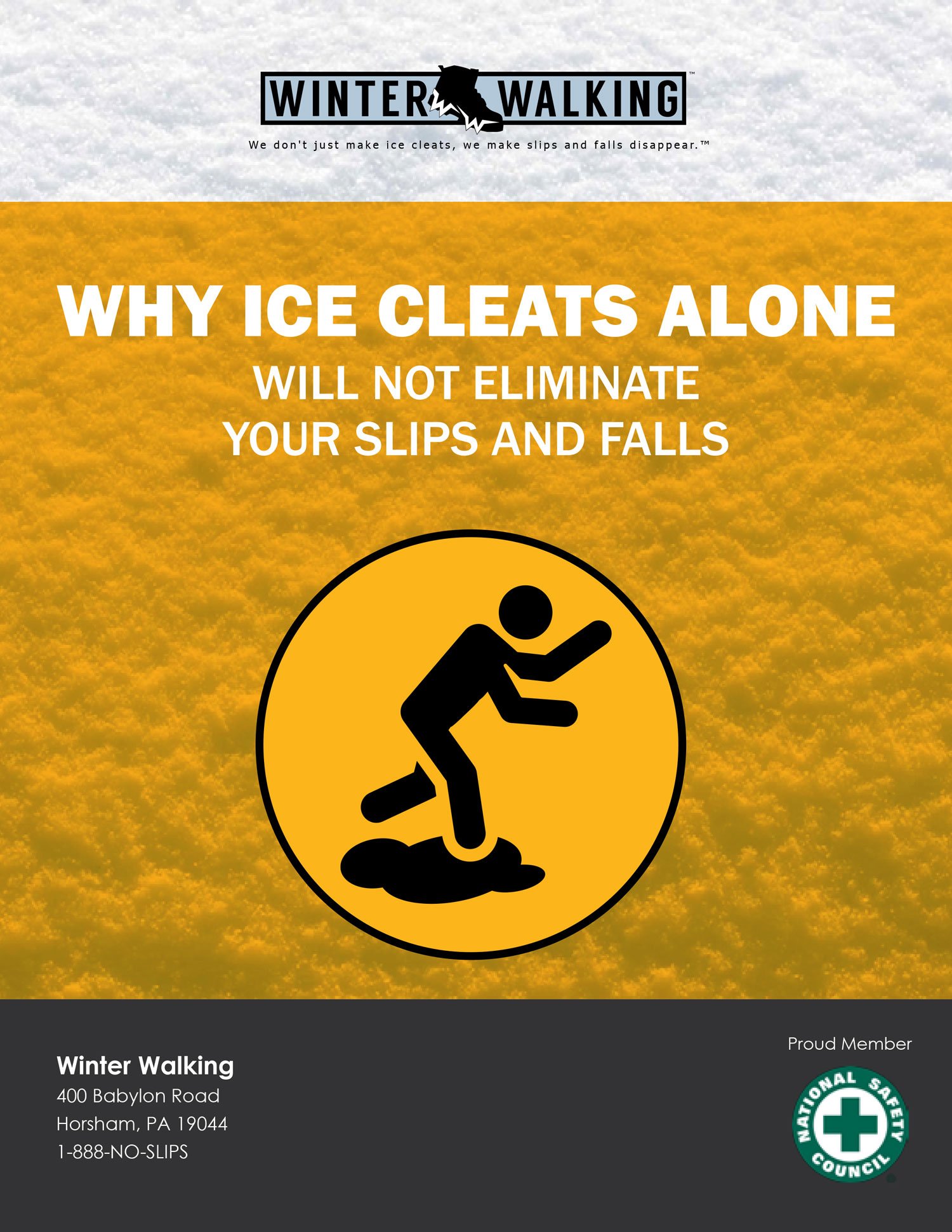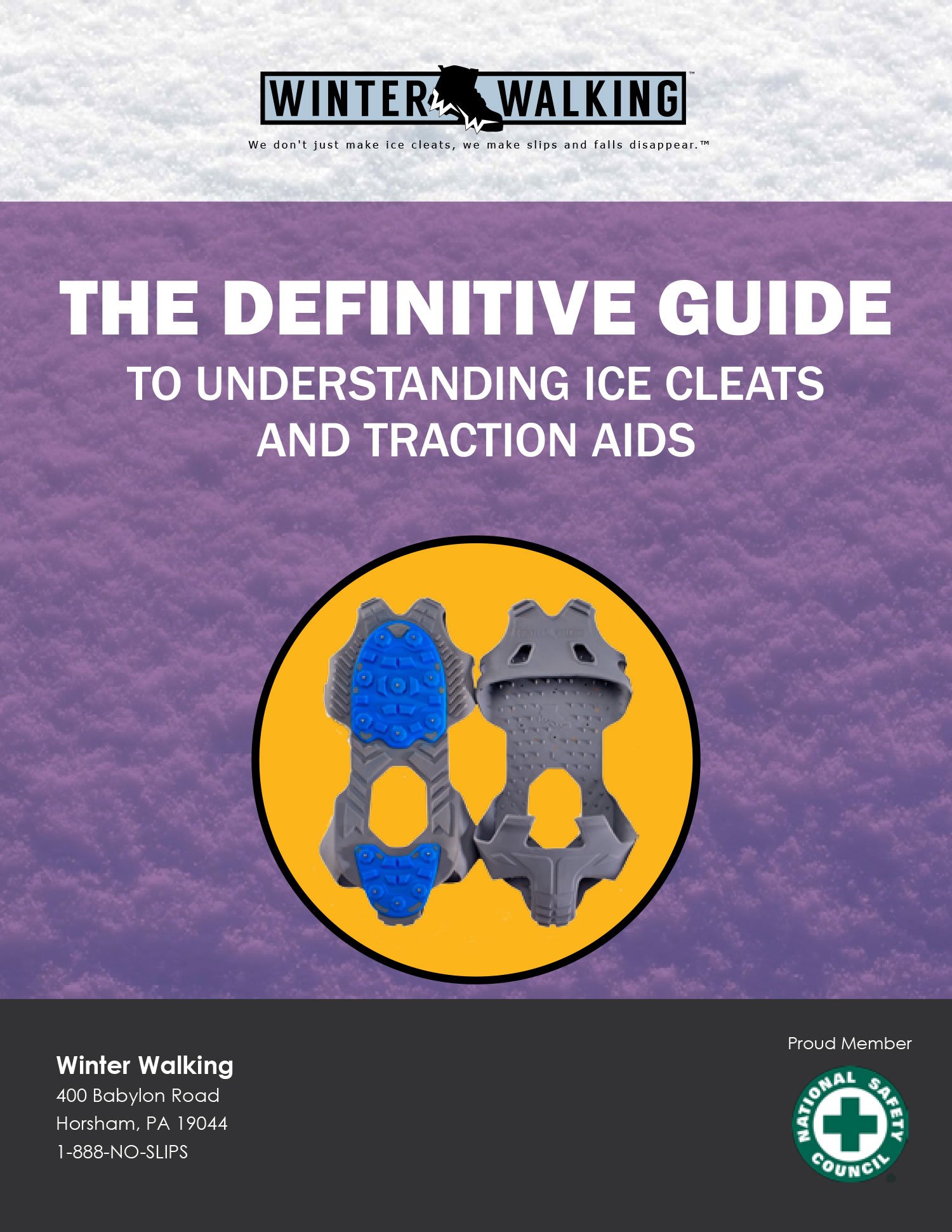The issue of workers having to constantly put on and take off their ice cleats throughout the day is not only a hassle, but it can also be a safety concern. In industries where employees need to frequently go outside, such as construction or delivery, the constant removal and reapplication of ice cleats can lead to complacency and an increased risk of slips and falls.
Additionally, while ice cleats are designed to improve traction on snow and ice, most workers do not exclusively work on these surfaces. This means that ice cleats may not be effective on other slippery surfaces such as wet floors or black ice.
However, this does not mean that ice cleats are not a valuable safety tool. It just means that companies need to be strategic in their selection of ice cleats and provide proper training on their use. By finding ice cleats that are easy to put on and take off, or by investing in transitional traction cleats that can be safely worn indoors, companies can ensure that their workers are protected from slips and falls all winter long.
Ultimately, the key to successful ice cleat use is to not assume that all ice cleats are created equal. By doing proper research, testing different options, and providing thorough training to employees, companies can find the right ice cleats that will keep their workers safe and productive all winter long.
To combat winter slips and falls, there are two solutions when it comes to ice cleats: finding an easy on/off option or a transitional traction cleat that can be worn indoors and out.
- Find an ice cleat that is easy to put on and take off.
- Find an ice cleat that can be kept on through out the day, both inside and out.
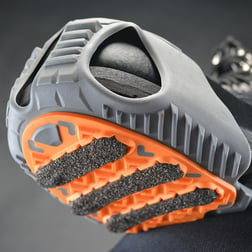 If you want to focus on finding an ice cleat that is easy to take on and off, look for specific design features that will assist with this task, such as dual pull tabs. Pull tabs are the portion of stretch ice cleats that sit behind the heel, giving the user something to grab on to after inserting their toe. Some considerations:
If you want to focus on finding an ice cleat that is easy to take on and off, look for specific design features that will assist with this task, such as dual pull tabs. Pull tabs are the portion of stretch ice cleats that sit behind the heel, giving the user something to grab on to after inserting their toe. Some considerations:
- If an ice cleat doesn’t feature a pull tab behind the heel, it should be removed from use.
- If an ice cleat features a single pull tab that narrows the heel opening when being pulled, it’s actually making the device more difficult to put on.
- Dual pull tabs allow the user to use two hands, in order to open the heel up wide for easy on and off.
For those who want to avoid the hassle of constantly taking off and putting on their ice cleats, there is a solution. TRANSITIONAL TRACTION® ice cleats not only provide increased traction on ice and snow but also offer the versatility to be safely worn inside. Don't assume that all ice cleats will cause the same problems your workers may have experienced with one particular model. By exploring different options and providing proper training, companies can find the right ice cleats to keep their workers safe and productive all winter long.
Thank you for reading. If you found value in this post, please consider sharing it with your LinkedIn network or simply “like” it.
Jordan Bell is the President of Winter Walking. He has been helping organizations across a wide variety of business sectors prevent workplace slips and falls in ice and snow for over 20 years. Winter Walking currently helps some of the world’s largest organizations keep their employees both safer and more productive while working outdoors in the winter season. Contact jordan@winterwalking.com or visit www.winterwalking.com.
Rate This Content:
